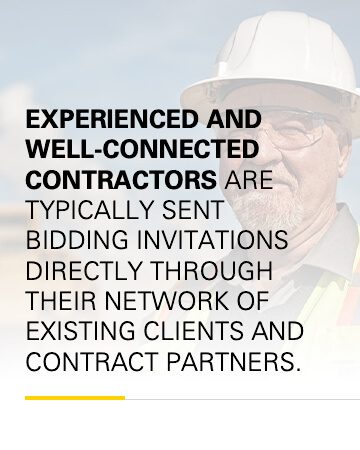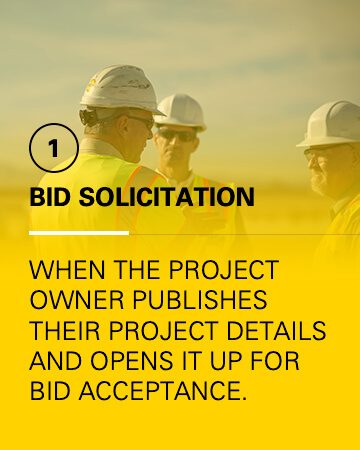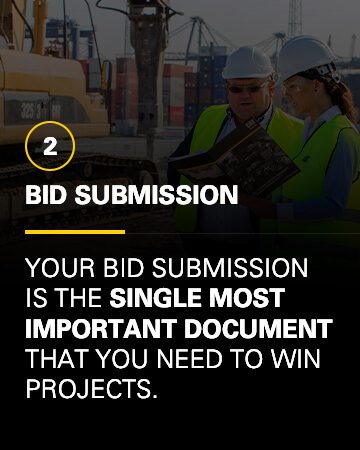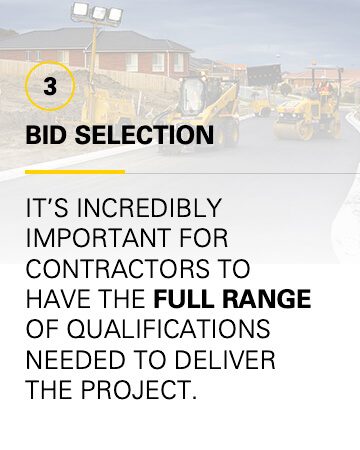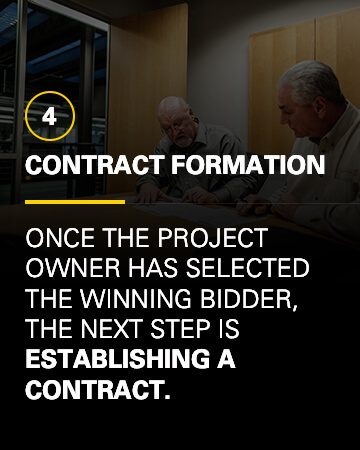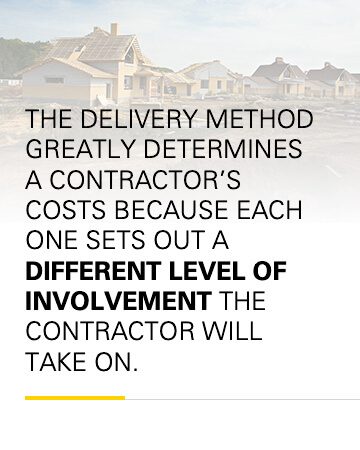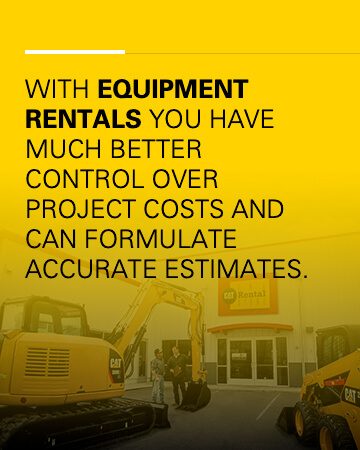
Your Complete Guide to Construction Bidding
Most projects today — whether public or private — require contractors to submit formal bids. The process can be time-consuming, detailed, and competitive. But it is also where strong companies stand out. Contractors who know how to find opportunities, read the documents carefully, build accurate estimates, and communicate their value clearly have a much better chance of winning profitable jobs.
Finding Construction Bidding Opportunities
Several well-known sites post active projects and requests for bids. These platforms often let you filter by trade, location, or project size.
Governmentbids.com – Focuses on federal, state, and local government projects across the U.S.
Construction.com – Covers private and public projects with a strong emphasis on commercial construction
BidClerk.com – Offers detailed project information and often includes contact details for decision-makers
CMDGroup.com – Tracks projects nationwide with tools for forecasting and lead generation
ConstructionWire.com – Highlights early-stage projects so contractors can plan ahead
Local procurement portals, city websites, and trade newsletters also share opportunities. Contractors should set up alerts or saved searches so they never miss a project posting.
Types of Construction Bids
Construction projects don’t all follow the same bidding process. Owners choose the method that fits their goals, funding, and project type.
Open bids are common for public projects where laws require transparency. Any qualified contractor can submit a proposal. This creates wide competition and helps keep pricing fair. But open bids can attract many submissions, making it hard for smaller contractors to stand out.
Selective bids limit proposals to a small group of invited contractors. Owners may choose companies they’ve worked with before or ones with proven expertise.
Negotiated bids involve the owner working directly with one contractor. Together they agree on scope, price, and schedule. This approach is faster but depends heavily on trust and reputation.
Design-build bids use a single team for both design and construction. This reduces the risk of miscommunication between architects and builders.
Two-step bids happen in two rounds. First, contractors submit their qualifications. Then selected candidates provide detailed pricing. This process helps owners make sure only capable contractors move forward.
Deciding Whether to Bid
When reviewing a new opportunity, ask yourself:
- Do we have proven experience in this type of project?
- Do we have enough labor, equipment, and time to meet the schedule?
- Are there unusual risks such as hazardous materials, complicated logistics, or unclear scope?
- Is the owner well funded and decisive, or do they have a reputation for delays and scope creep?
- After factoring in overhead and risks, will this project generate a reasonable profit?
- Does this job help us enter a new market, strengthen a key client relationship, or support long-term goals?
Watch out for unrealistic deadlines, vague specifications, extremely low budgets, or a history of disputes or lawsuits involving the client.
Turning down a project doesn't mean turning down future work. In fact, declining when the fit isn't right can build credibility with clients. It shows you're selective and committed to doing quality work, not just chasing volume.
Preparing a Construction Bid
Once you decide a project is worth bidding on, it’s time to prepare your proposal. Start by reviewing the bid documents:
- Check submission deadlines and bonding requirements.
- Look at alternates and allowances so you don’t miss pricing options.
- Review drawings and specifications together to spot conflicts early.
- Note any required submittals, testing, or certifications that could affect schedule or cost.
If something isn’t clear, submit a request for information (RFI). RFIs help clarify scope before you spend time estimating. Be specific with your questions.
Also, make a site visit. No set of drawings can replace seeing the site in person. Take notes and photos. Look for challenges such as access points, soil conditions, existing utilities that may need to be moved, and possible safety risks.
Quantity Takeoffs
A quantity takeoff is the backbone of your estimate. It translates drawings into numbers: cubic yards of concrete, linear feet of pipe, or tons of asphalt. Separate labor, materials, equipment, and subcontractor scopes. And be sure to use consistent units for all calculations and double-check your math.
Estimating Tools
Digital tools make estimating faster and reduce errors. They also allow you to store data for future bids. Contractors can compare features and prices across construction estimating tools.
Pricing Labor, Materials and Equipment
- Labor: Include crew rates, realistic production outputs, and labor burden (payroll taxes, insurance, benefits). Add travel or per diem if applicable.
- Materials: Use up-to-date supplier quotes. Watch for long-lead items that could affect schedules.
- Equipment: Decide what you’ll own versus rent. Rentals help keep bids competitive and preserve cash flow. For example, contractors can improve their margins by focusing capital on profitable contracts.
Delivery and Logistics
Even small delivery issues can throw off your schedule. Plan for trucking, crane picks, and laydown areas (temporary storage locations) in your bid. You can save time by streamlining equipment delivery to the jobsite.
Managing Costs and Risks
Even the most accurate bid can fail if it doesn’t account for hidden costs or project risks. Owners expect contractors to plan carefully, and overlooking these details can lead to overruns or lost profits. Start by defining:
- Direct costs – labor, materials, equipment, and subcontractor expenses
- Indirect costs – supervision, trailers, utilities, and temporary facilities
- Overhead and markup – insurance, bonding, and profit margin
- Tip: Don’t forget to account for hidden costs such as permits, inspections, weather delays, storage, and staging space rentals.
Subcontractor management: Avoid gaps in scope by sending clear bid requests, comparing quotes, challenging high prices, and making sure subcontractor scopes match your estimate.
Scheduling and risk planning: A solid bid includes a realistic schedule. Build in time for inspections, long-lead materials, weather delays, and crew availability.
Using contingencies wisely: Contingencies cover “known unknowns.” Tie them to specific risks instead of using random percentages. For example, add a line item for rock excavation if soil reports show uncertainty.
Cash flow and rentals: Big purchases can drain cash and make it hard to cover payroll or buy materials. Renting equipment helps keep cash flow steady and costs predictable. Look for flexible rental options to manage expenses.
Submitting and Following Up
After weeks of preparation, submit your bid package in a clear, professional, and timely manner. This stage is where all your effort pays off — or gets wasted if small details are overlooked.
Write a clear proposal: Use simple formatting, legible fonts, and consistent headings. Key proposal elements include restating the scope, exclusions and assumptions, schedule overview, and communication.
Meet the submission deadline: Missing a submission deadline almost always disqualifies you. Build internal checklists and timelines to ensure your package is ready early.
After submission: Owners may follow up with questions or clarifications. Respond promptly and professionally. Even if your bid isn’t the lowest, quick responses show reliability and may keep you in the running.
Technology and Best Practices
For digital bidding, modern software can handle everything from takeoffs to submission. Construction estimating tools help contractors compare features, integrations, and pricing. Benefits include centralized storage of pricing data and historical bids, templates for repeatable tasks, and cloud-based collaboration.
Follow Ethical Bidding
- Avoid “bid shopping” — sharing one subcontractor’s price with another to drive costs down.
- Respect confidentiality agreements.
- Be transparent about inclusions and exclusions.
- Turn down bids that are clear conflicts of interest.
Avoid These Mistakes
- Skip site visits and rely only on drawings.
- Ignore addenda issued by the owner.
- Underestimate labor productivity or equipment needs.
- Fail to account for mobilization or demobilization costs.
- Forget to include permits, inspections, or closeout tasks.
The Role of Rentals in Construction Bidding
Equipment is one of the largest cost drivers in any construction estimate. The decision to buy or rent affects cash flow, competitiveness, and risk. Some advantages include:
- Lower upfront costs: Renting avoids the large capital expense of buying equipment you may not need for the long term.
- Flexibility: You can scale your fleet up or down depending on project demands.
- Access to newer models: Rental fleets are updated frequently, which means you can offer owners the benefits of modern, fuel-efficient, and reliable machines.
- Reduced downtime: Rental companies handle maintenance and repairs, which means there is less risk of unexpected costs during the project.
- Controlled cash flow: Rental strategies can help contractors keep construction project costs under control and even reduce operating costs.
Partner With The Cat® Rental Store
Strong bids depend on reliable equipment. The Cat® Rental Store offers a wide selection of machines to fit projects of all sizes — from compact earthmoving tools to large roadwork fleets.
You can request a quick quote online or find a local dealer to discuss your project needs. With flexible rental terms, expert support, and dependable machines, The Cat Rental Store helps contractors deliver on every winning bid.
Find the Cat Rental Store Near You